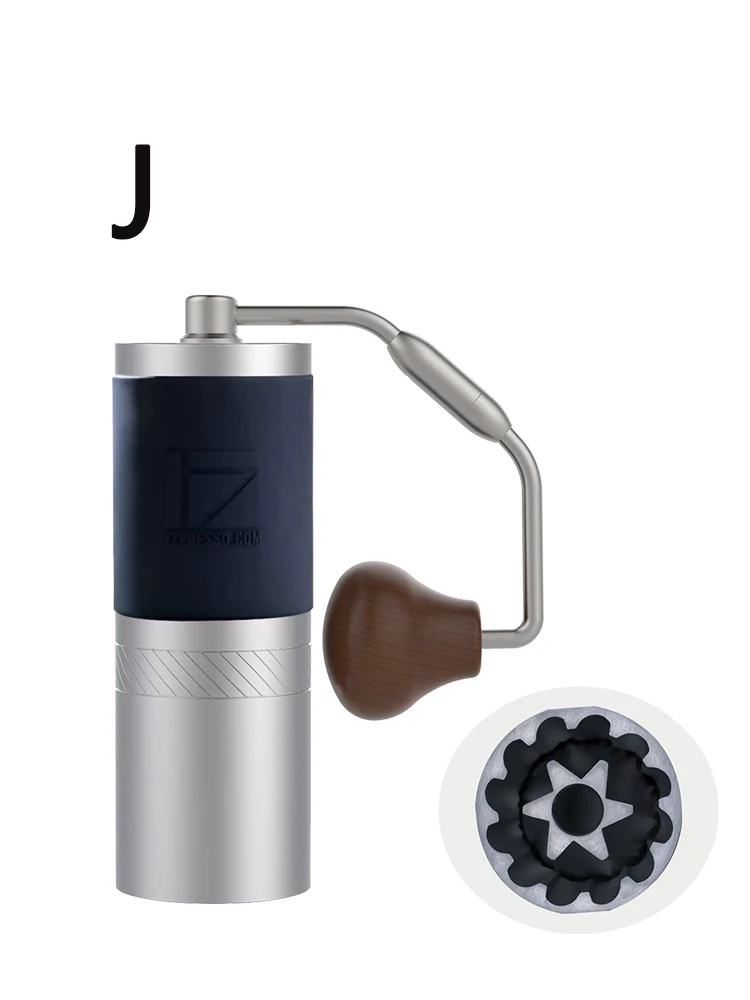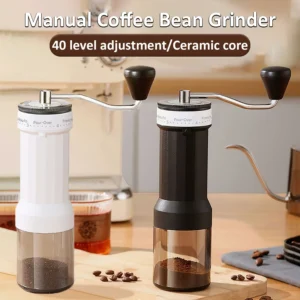The Science of Heat Generation in Coffee Grinding
When you grind coffee beans, a fascinating transformation happens that goes beyond just breaking them into smaller pieces. The process generates heat – a fact that many coffee enthusiasts overlook but one that significantly impacts the final taste in your cup.
At its most basic level, grinding creates friction between the beans and the burrs (the grinding surfaces), and this friction produces heat. Think about rubbing your hands together quickly – they warm up. The same principle applies to coffee grinding, just at a much more intense level.
Several heat sources come into play during grinding:
– Direct friction between the beans and burr surfaces
– Motor heat that transfers to the grinding mechanism
– Continuous grinding that compounds heat buildup over time
But the central question remains: does the speed at which we grind actually affect the temperature of the coffee grounds? The answer is yes, but perhaps not in the way you might initially think.
This relationship between grinding speed and temperature isn’t just academic – it directly affects extraction quality, flavor compounds, and ultimately the taste of your brew. Understanding the relationship between grinding mechanics and coffee quality becomes essential when pursuing that perfect cup, especially for methods requiring precise extraction like espresso.
How Grinding Speed (RPM) Influences Coffee Ground Temperature
RPM (revolutions per minute) is essentially how fast the burrs in your grinder spin. Think of it as the engine speed of your coffee grinder. Commercial grinders typically operate between 900-1400 RPM, while many home grinders run at 400-800 RPM. Manual burr mills operate at much lower speeds, usually under 100 RPM.
The relationship between grinding speed and temperature follows some intuitive and some surprising patterns:
Higher RPM = More Friction
– Faster-spinning burrs create more friction with coffee beans
– More friction generally means more heat generation
– Commercial grinders running at high speeds can increase ground temperature by 30°F (17°C) or more
The Counterintuitive Factor: Contact Time
– At higher speeds, coffee spends less total time in the grinder
– Shorter contact time may actually reduce overall heat absorption
– Beans pass through quickly, limiting exposure to heat-generating surfaces
This creates an interesting balance: while faster grinding creates more instantaneous heat, it may result in less total heat transfer to the coffee if the process is completed quickly enough.
Different types of grinders handle this heat equation differently:
- Commercial grinders: Higher RPMs with cooling systems to manage heat
- Home electric grinders: Moderate RPMs with varying heat management capabilities
- Manual grinders: Low RPMs with minimal heat generation
The temperature effects become especially noticeable during continuous use. While heat from grinding affects coffee grounds in various ways, the speed at which this happens depends largely on how fast those burrs are spinning.
The Physical Impact: How Heat Changes Coffee Particles
When coffee beans heat up during grinding, they undergo subtle but important physical changes. These alterations affect not just the temperature but the very structure of the particles created.
At cooler temperatures, coffee beans are more brittle and shatter cleanly when ground. This typically results in:
– More uniform particle sizes
– Cleaner fractures in the bean structure
– Better consistency throughout the grind
As beans warm during grinding, they become slightly more plastic and less brittle. This change causes:
– Less uniform particle distribution
– Fewer fine particles (those tiny coffee dust particles)
– Irregular particle shapes that affect extraction
Think of it like ice versus butter – ice shatters into clean pieces when broken, while butter deforms and smears. Coffee beans exist somewhere on this spectrum, shifting toward the “butter end” as they heat up.
This is why many specialty coffee shops sometimes use the “frozen bean technique,” where they chill or freeze beans before grinding. The colder temperature helps maintain brittleness, leading to more consistent particles.
The impact of heat retention in metal coffee grinders becomes particularly important when considering these physical changes, as different materials transfer and retain heat at different rates. Metal grinders tend to heat up more quickly but also dissipate heat faster than ceramic models, affecting the consistency of your grounds throughout a grinding session.
Temperature’s Effect on Extraction and Brewing Parameters
The temperature changes during grinding don’t just stop at physical alterations – they directly influence how your coffee extracts when brewing.
When coffee grounds are warmer, several brewing dynamics change:
- Flow rate increases: Espresso shots tend to run faster with warmer grounds
- Viscosity decreases: The coffee slurry becomes less thick and flows more readily
- Extraction patterns shift: Certain compounds extract at different rates
This phenomenon explains why baristas often need to make continuous adjustments to grind settings throughout their workday. As a grinder heats up with continuous use, the same grind setting produces a different result – typically requiring a finer setting later in the day to achieve the same shot time.
For example, a morning espresso might extract in 25-30 seconds with a particular grind setting. By midday, after the grinder has warmed up, that same setting might result in a 20-second shot – too fast for optimal extraction. The barista must adjust to a finer setting to compensate.
This temperature sensitivity is one reason why many coffee professionals appreciate hand grinders for espresso preparation. These manual tools generate minimal heat during operation, maintaining more consistent temperatures and requiring fewer adjustments throughout the day.
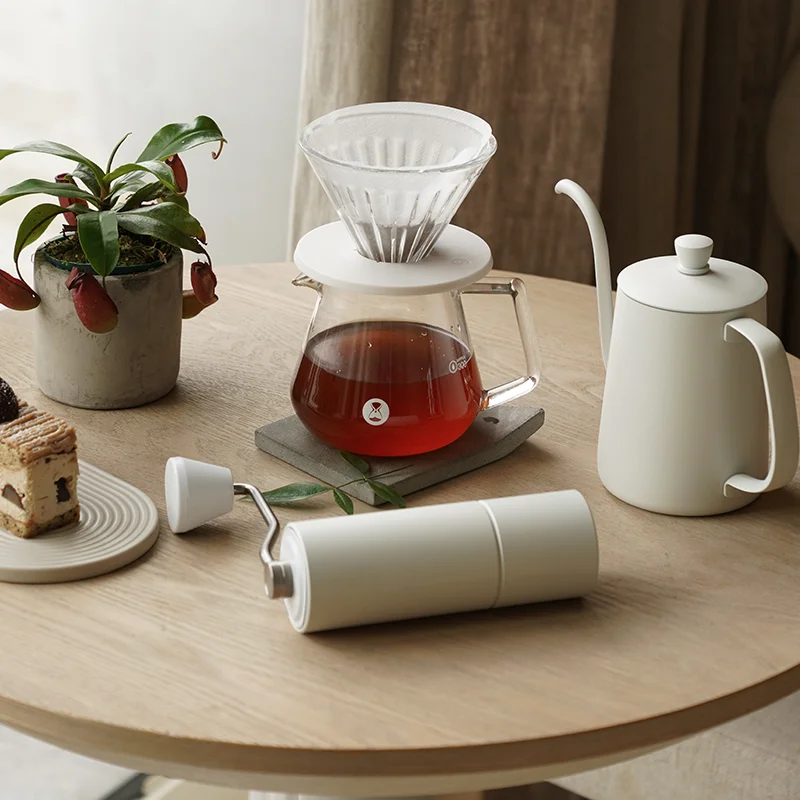
Flavor Impact: How Grind Temperature Alters Your Coffee’s Taste
Perhaps most important for coffee lovers is how grinding temperature affects the actual taste of your brew. The flavor impact happens in several key ways:
Volatile Compound Loss
– Heat accelerates the evaporation of aromatic compounds
– Many delicate flavor notes escape during grinding if temperatures rise too high
– Once lost, these compounds cannot be recovered during brewing
Oxidation Acceleration
– Higher temperatures speed up oxidation reactions
– Oxidation typically contributes to flat, cardboard-like flavors
– Fresh, vibrant notes diminish more rapidly in warmer grounds
Off-Flavor Development
– Excessive heat can develop unpleasant taste characteristics:
– Burnt or ashy notes
– Increased bitterness
– Decreased sweetness
– Reduced acidity and brightness
This is why temperature stability is so closely linked to flavor consistency. Even minor temperature fluctuations during grinding can produce noticeable differences in the cup.
The relationship between proper grind settings and the perfect shot includes temperature as a critical variable. When grind temperature remains consistent, extraction becomes more predictable, allowing for more reliable and delicious results cup after cup.
Heat Management in Commercial Settings
Commercial coffee environments face unique challenges when it comes to grind temperature management. In a busy café, grinders might run almost continuously for hours, creating substantial heat buildup that home users rarely experience.
This continuous operation leads to several issues:
– Progressive heating throughout the day
– Inconsistent dosing as ground coffee expands differently
– Changing extraction times requiring constant recalibration
– Flavor degradation during peak service periods
To combat these problems, commercial grinders implement various solutions:
– Active cooling systems with fans or ventilation
– Heat-dissipating materials in critical components
– Temperature-monitoring displays
– Pre-programmed grind adjustments to compensate for temperature changes
Some high-end commercial grinders even feature “temperature stabilization” routines, where they run briefly before service to reach a consistent operating temperature, providing more stable results throughout the day.
While these issues are most pronounced in commercial settings, home enthusiasts using precision manual grinders can benefit from similar principles. Manual grinding naturally generates less heat, offering greater temperature consistency and potentially more stable extraction results across multiple brewing sessions.
Temperature Control Strategies for Home Brewers
While home coffee enthusiasts typically face fewer temperature-related challenges than commercial operations, several practical strategies can help manage grinding temperature for better results:
Single-dose grinding: Grind only what you need immediately rather than filling a hopper, reducing heat buildup from continuous operation
Rest periods: If making multiple coffees, allow your grinder to cool between uses
The frozen bean technique:
– Store beans in the freezer in small, sealed portions
– Grind them directly from frozen for cooler grinding
– This prevents moisture absorption while maintaining brittlenessMorning grinding: Temperature is usually most stable in the morning before grinders heat up from repeated use
Environmental awareness: Be mindful that ambient temperature and humidity affect grinding performance – you may need different settings in summer versus winter
Regular cleaning: Remove old coffee residue that can absorb and retain heat
Burr maintenance: Keep burrs sharp, as dull burrs generate more friction and heat
Understanding the tradeoff between grinding speed and consistency helps home brewers make informed decisions about their grinding approach. While grinding more slowly generally produces less heat, the overall benefits depend on your specific equipment and coffee preferences.
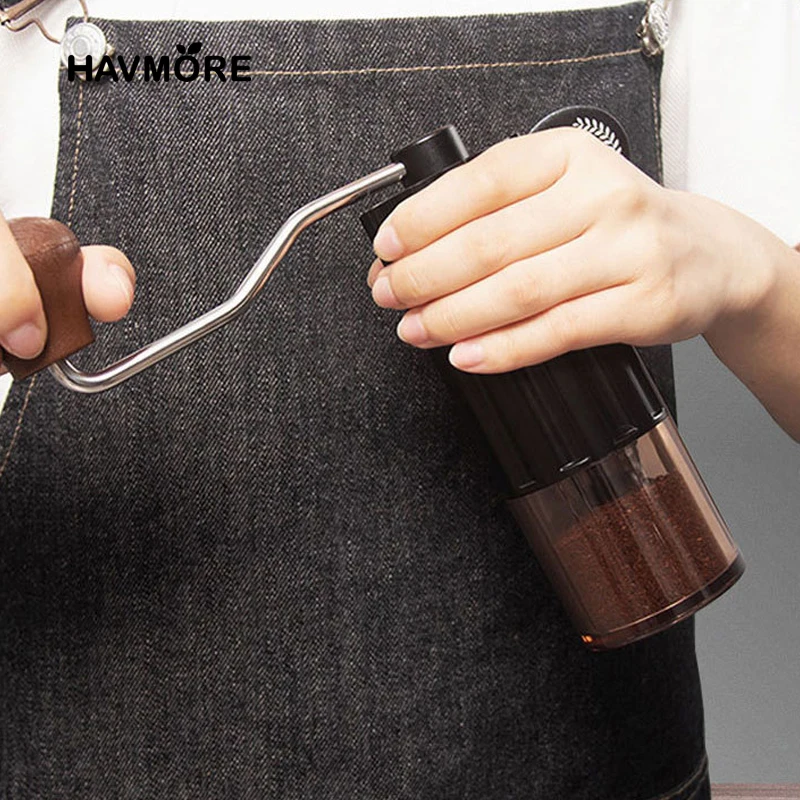
Choosing a Grinder with Temperature in Mind
If temperature control during grinding is important to you, certain grinder features and designs offer advantages:
| Feature | Temperature Benefit |
|---|---|
| Ceramic burrs | Slower heat buildup than metal, but retain heat longer |
| Steel burrs | Quick heat transfer but faster cooling |
| Direct drive | Less motor heat transferred to grinding chamber |
| External adjustment | Less heat transfer from body to beans |
| Lower RPM | Generally less friction and heat generation |
| Manual operation | Minimal heat generation compared to electric |
Ceramic burr coffee grinders often provide excellent temperature stability for home users. While they can eventually heat up with extended use, their slower heat transfer characteristics make them suitable for brewing methods where temperature consistency is critical.
When evaluating grinders, consider not just speed and grind quality but also the heat management capabilities. This is particularly important if you prepare multiple coffees in succession or if you’re especially sensitive to the subtle flavor differences that temperature variations can produce.
Fine Adjustment Hand Grinder, Precision Manual Grinder, Travel Coffee Grinder
Price range: $185.11 through $494.63 Select options This product has multiple variants. The options may be chosen on the product pageHand Burr Grinder, Hand Crank Coffee Grinder, Manual Espresso Grinder, Portable Coffee Grinder
Price range: $262.72 through $300.22 Select options This product has multiple variants. The options may be chosen on the product pageManual Burr Mill, Manual Coffee Grinder Stainless Steel, Manual Coffee Mill Grinder, Mechanical Coffee Grinder
Price range: $127.26 through $130.32 Select options This product has multiple variants. The options may be chosen on the product pageHand Burr Grinder, Manual Coffee Grinder Stainless Steel, Precision Manual Grinder
Price range: $183.64 through $187.52 Select options This product has multiple variants. The options may be chosen on the product pageCeramic Burr Coffee Grinder, Hand Burr Grinder, Hand Crank Coffee Grinder, Manual Coffee Bean Grinder
Price range: $59.17 through $59.96 Select options This product has multiple variants. The options may be chosen on the product page
Beyond Speed: Other Factors Affecting Grind Temperature
While grinding speed significantly impacts temperature, several other variables also play important roles:
• Burr design: Flat burrs typically generate more heat than conical burrs due to greater surface area contact
• Grinder material: Metal bodies conduct heat differently than plastic or wood
• Bean freshness: Fresher beans contain more moisture and respond differently to friction
• Roast level: Darker roasts tend to be more brittle and generate less heat during grinding
• Grinder cleanliness: Residue buildup can absorb and retain heat, affecting subsequent grinding sessions
Flat burr hand grinders distribute heat differently than conical models, often with more heat generation but potentially more even particle distribution. Understanding these differences helps coffee enthusiasts select equipment appropriate for their specific needs and brewing methods.
Is Lower Grinding Speed Always Better for Coffee Quality?
Many coffee enthusiasts assume slower grinding is always superior, but the reality is more nuanced.
When slower grinding benefits quality:
– For heat-sensitive light roasts where preserving delicate aromatics is crucial
– When grinding for espresso, where particle distribution significantly impacts extraction
– For single-origin coffees where unique flavor characteristics need preservation
When faster grinding may be acceptable or preferable:
– For darker roasts that are less susceptible to heat damage
– When brewing methods with more forgiving extraction (like French press)
– When preparing multiple coffees and time efficiency matters
– With grinders specifically designed to manage heat at higher speeds
The ideal approach depends on your specific situation—your grinder design, coffee type, brewing method, and personal preferences. The relationship between grind size and espresso extraction is complex, with temperature being just one important variable in a system with many interconnected factors.
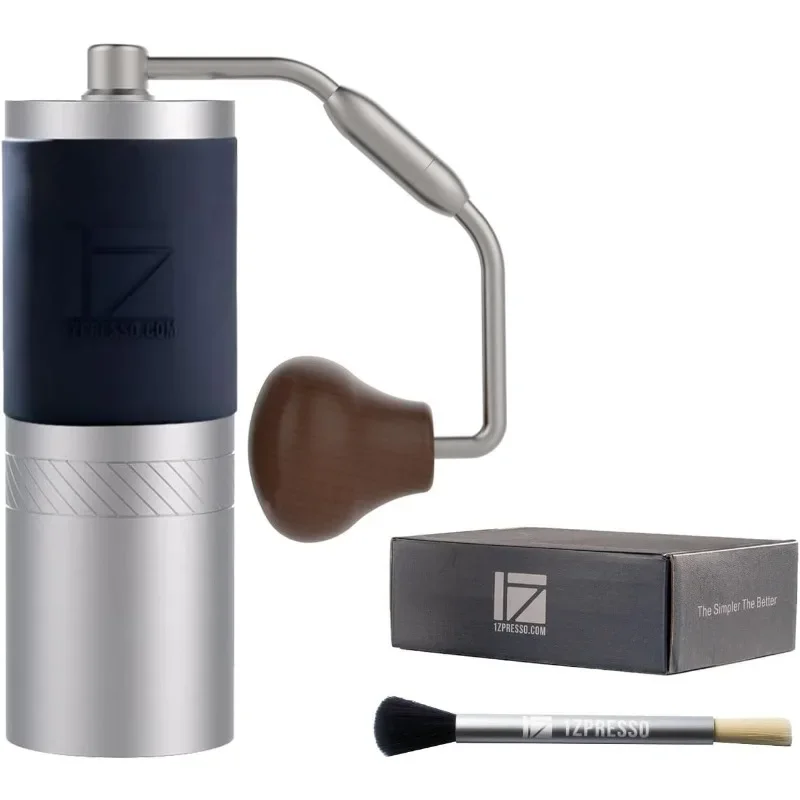
How to Test if Your Grinder is Overheating Your Coffee
Want to determine if your grinder is introducing too much heat? Try this simple test:
- Measure the temperature of your beans before grinding using a kitchen thermometer
- Grind your normal amount of coffee
- Immediately measure the temperature of the grounds
- A temperature increase of more than 20°F (11°C) may indicate excessive heating
You can also perform a taste test:
1. Prepare a coffee using your regular grinding approach
2. For the next batch, refrigerate your grinder parts for 30 minutes before grinding
3. Compare the flavors between the two coffees, focusing on clarity and acidity
These differences become especially noticeable when comparing manual and automatic grinders. Manual versus automatic grinder settings reveal not just operational differences but temperature variances that affect the final cup quality.
When to Adjust Grinding Speed for Different Brewing Methods
Different coffee preparation methods benefit from specific approaches to grinding speed and temperature management:
| Brewing Method | Temperature Sensitivity | Grinding Speed Recommendation |
|---|---|---|
| Espresso | Very High | Slower grinding preserves oils and prevents channeling |
| Pour-over | High | Moderate to slow for uniform extraction |
| French Press | Moderate | Speed less critical; coarser grind produces less heat |
| Cold Brew | Low | Speed less important due to coarse grind and long extraction |
Light roasts generally benefit more from temperature-controlled grinding than dark roasts, as their complex acids and sugars are more susceptible to heat damage.
For methods requiring extreme precision, specialized manual coffee grinders for espresso offer the temperature stability and fine adjustment capabilities needed for consistent results. Their naturally slower operation helps preserve the full flavor potential of your coffee while allowing for the precise particle distribution essential for balanced extraction.
Understanding the relationship between grinding speed and coffee temperature isn’t just about technical knowledge—it’s about consistently creating better coffee. By managing this often-overlooked variable, you gain greater control over extraction and ultimately, the flavors in your cup.

